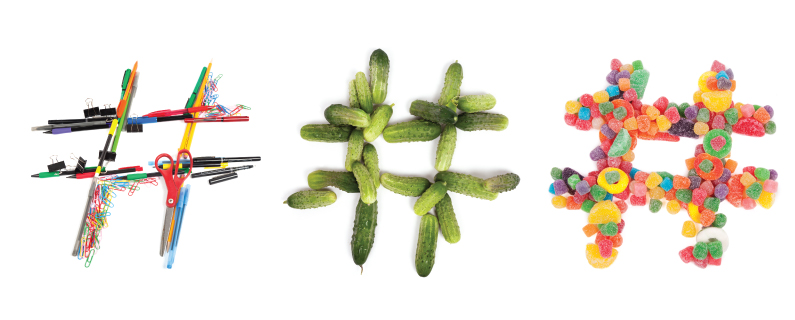
The hashtag, or in its earlier life the number sign, and even before that the pound sign. What do we know about this symbol that has been a fixture on every phone since rotary was a thing? It has won over our hearts and tweets with its current role as the symbol that allows us to connect via social media on everything from #mondaymotivation to #OHAtThePeg.
Somewhere in the not too distant past, the mysterious pound key got a new name and a new function. If you’re anything like me, you might have grown up seeing the symbol on your house phone and always kinda wondered what it was doing there.
Then, overnight these things were exploding all over Twitter, but why? Well, I’m here to fill you in on the history of the hashtag. We’re gonna dive into the past of the pound key and what happened to make it an overnight necessity in social media.
The origin of the number sign is still not entirely known. It’s proposed that the number sign was used as an abbreviation for weight in the food industry, that’s where its alias “pound sign” came from. Let’s get one thing sorted out, the number sign and the pound key are the same thing, just with different usage. When used before a number, it is a number sign. For example, #2 pencils are understood as number two pencils. When used after a number it signifies weight. 4# of shrimp would be understood as four pounds of shrimp in a market.
Chris Messina (a Google developer at the time) saw untapped potential with the number sign. He wanted a way to connect people to topics in a more streamlined approach on Twitter. Chris Messina thought this would be a great way to connect people to common topics. Unfortunately, in the beginning people didn’t see the potential the same way Messina did. He was largely dismissed by the tech community, Twitter included. So why the pound key? Messina chose that particular symbol because it was easy to reach on his 2007 Nokia feature phone. It was already there, why not use it?
“I didn’t need to invent something new,” he said. “This is good enough. I’m going to go with this.”
Two days later, another techie, Stowe Boyd, suggested the # symbol be called a hashtag.
“It just sounds catchier,” said Messina via CBS.
As with many things in life, fake it till you make it. Messina and a group of his tech friends starting using the symbol in front of words and phrases and it started to catch on. The hashtag’s big break was in 2009 when Twitter linked the hashtag to threads on the social media platform. The usage skyrocketed and people started talking about topics together in a way that organized conversations about the same topic on one page.
The rest is history, we use the hashtag across platforms to connect and discuss. It’s widely used on Twitter, Instagram and Facebook as a way to link and tag people or events.
As wonderful as the hashtag is, it can be abused. Word to the wise, when using hashtags try not to overuse them. Everyone loves a good #ThrowBackThursday but you don’t need to #hashtageverything. Use them appropriately and in conjunction with content you’re writing. Another great use for the hashtag is participating in events. You can catalog an entire event using hashtags and see the progression and what people thought about it in real time.
Need more tips for using social media? Check out this webinar for advice on social media etiquette and social time savers.

